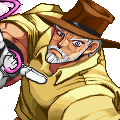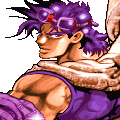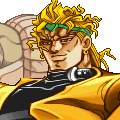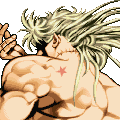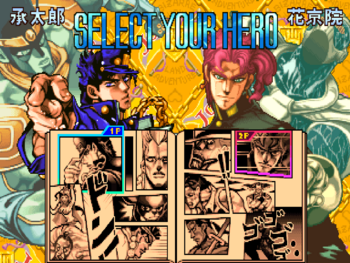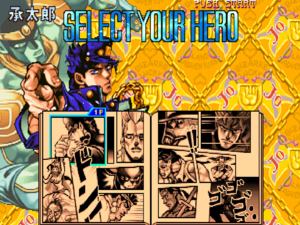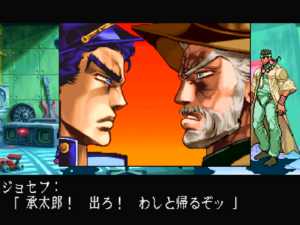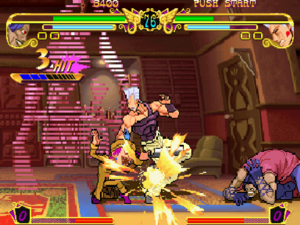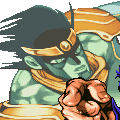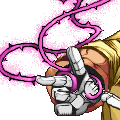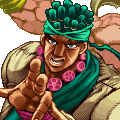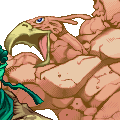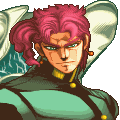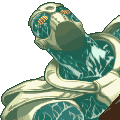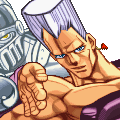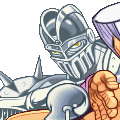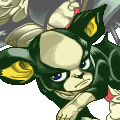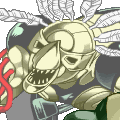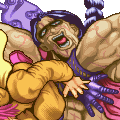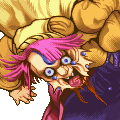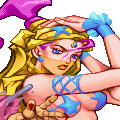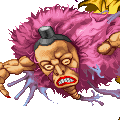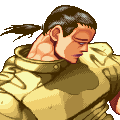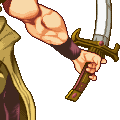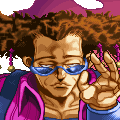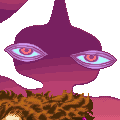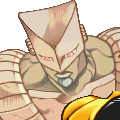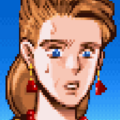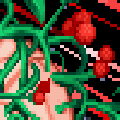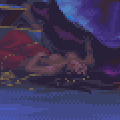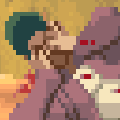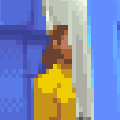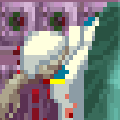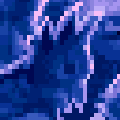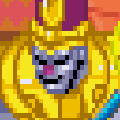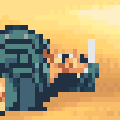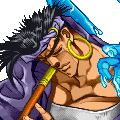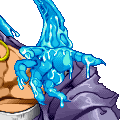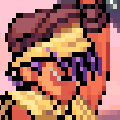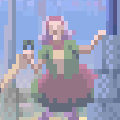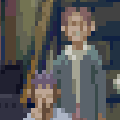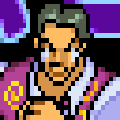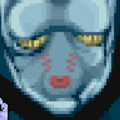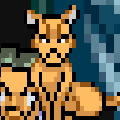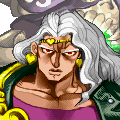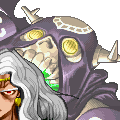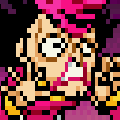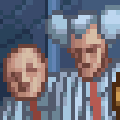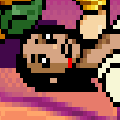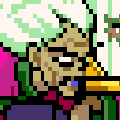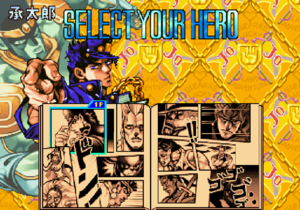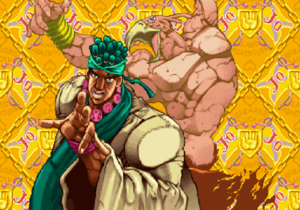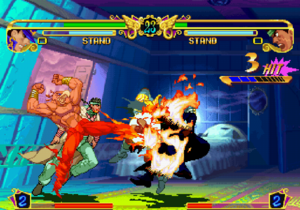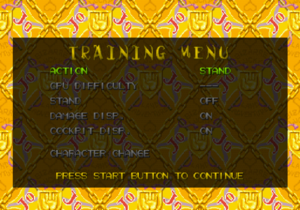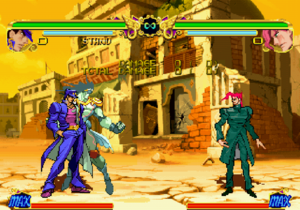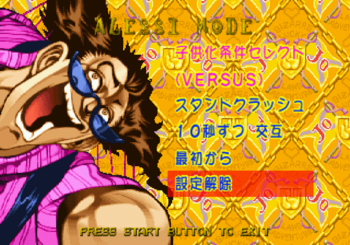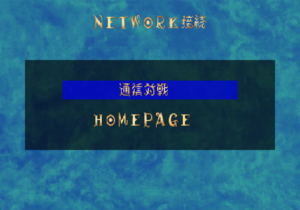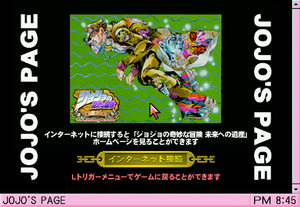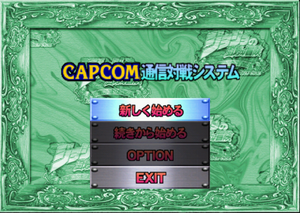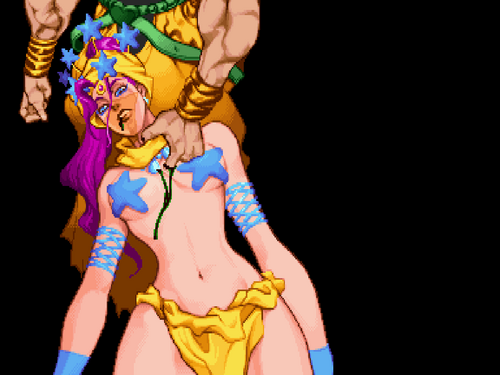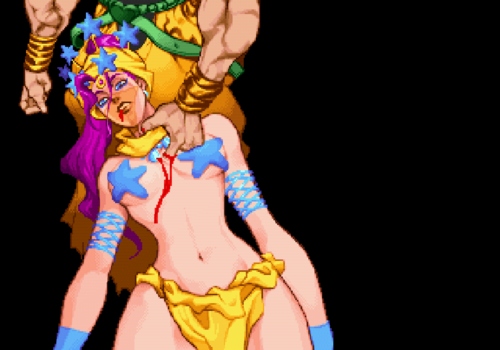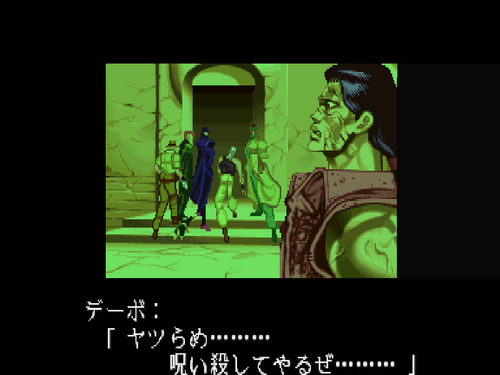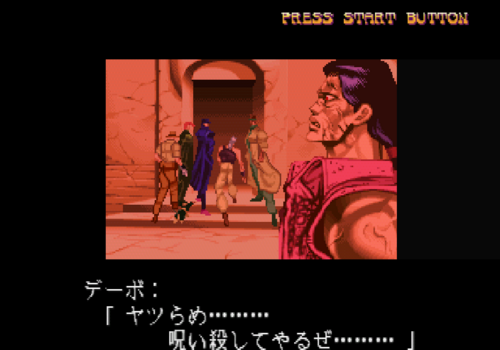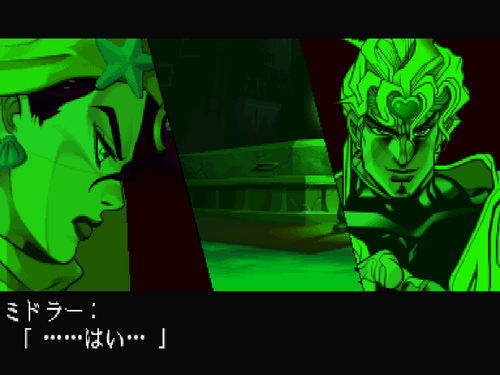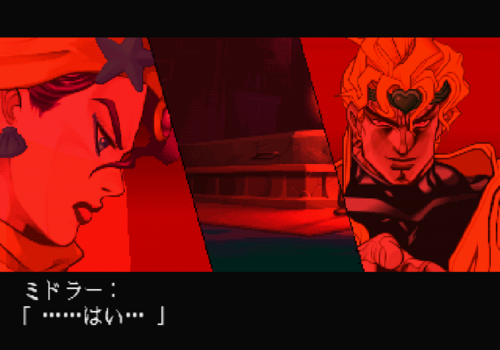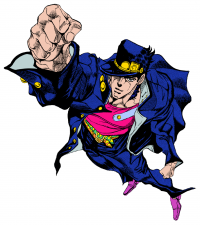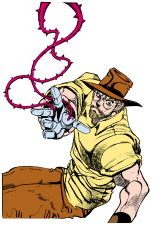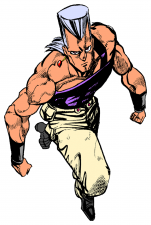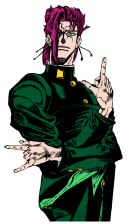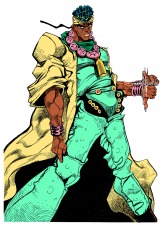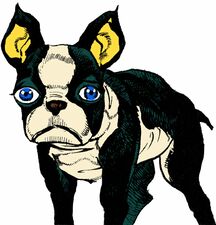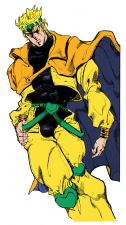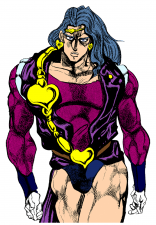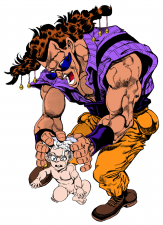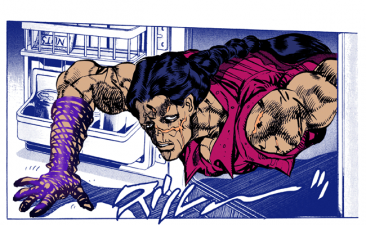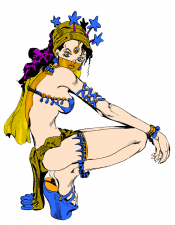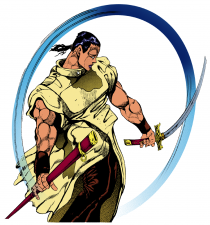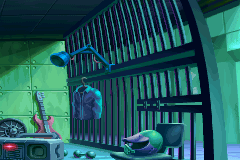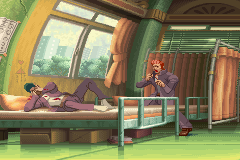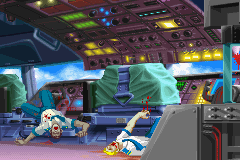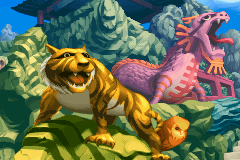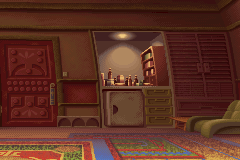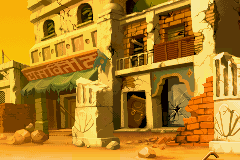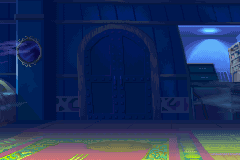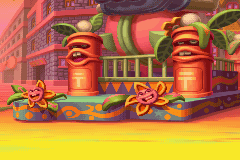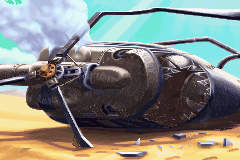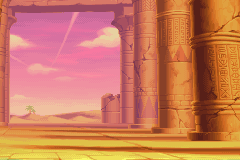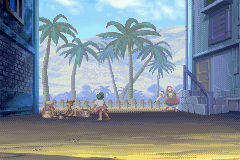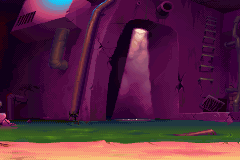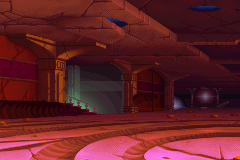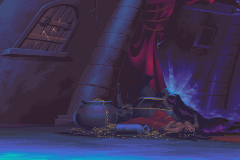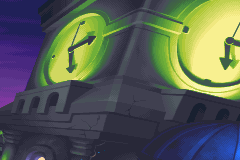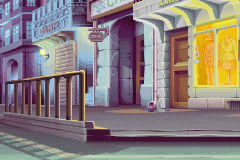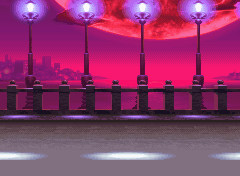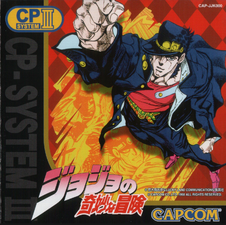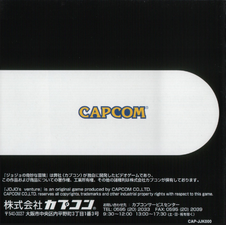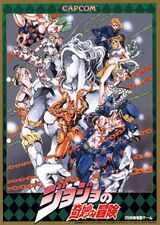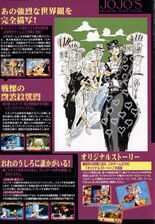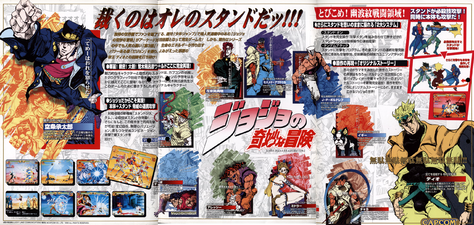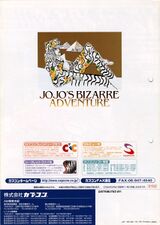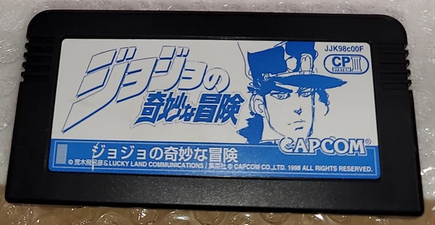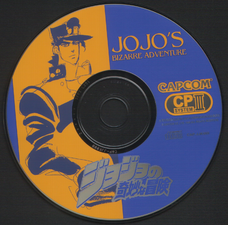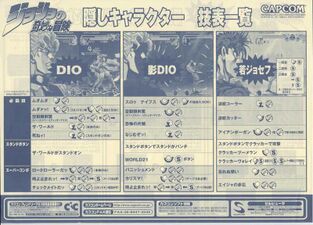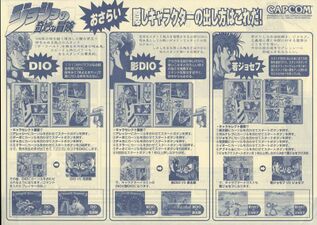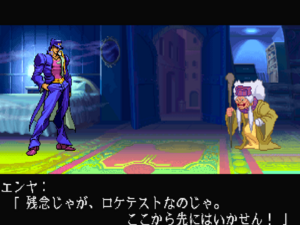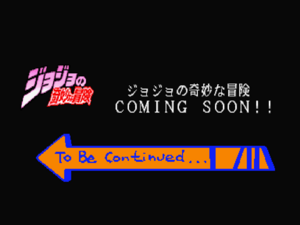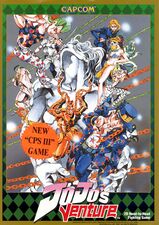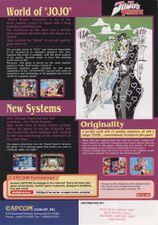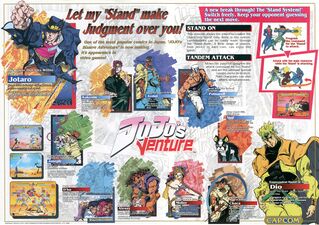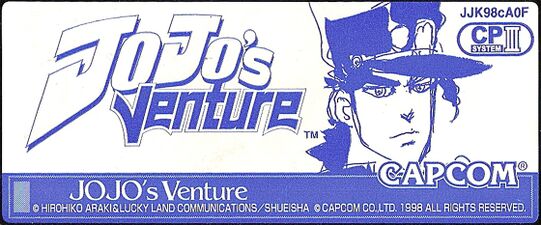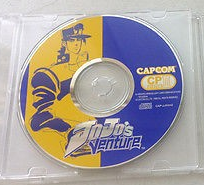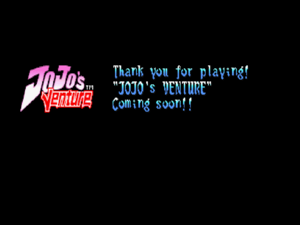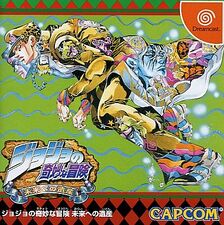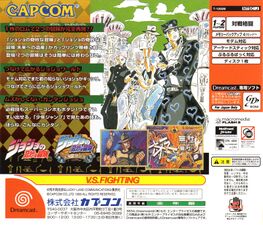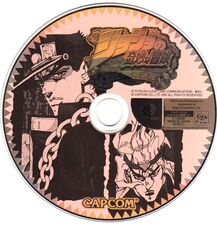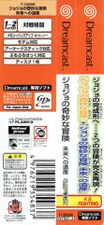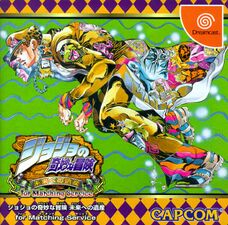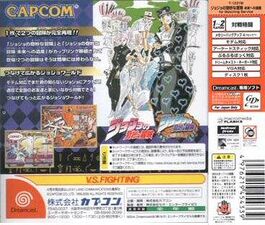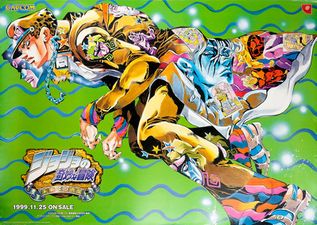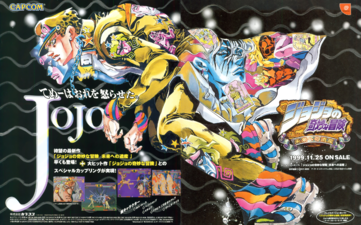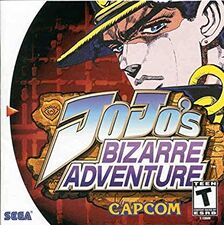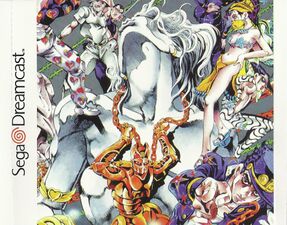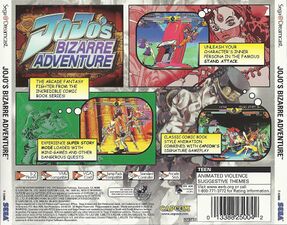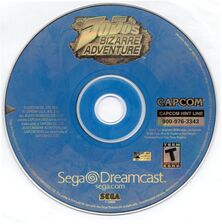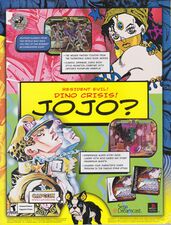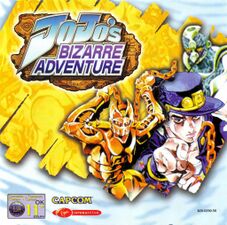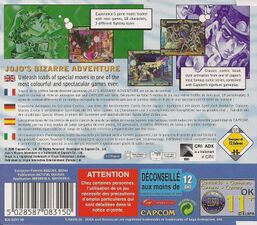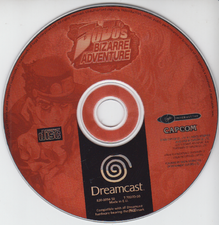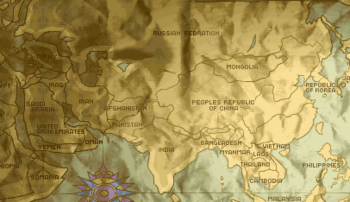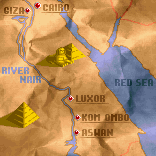JoJo's Venture

|
Note: Information about characters in this version is limited, so pages are primarily based on their appearance in Heritage for the Future. |
JoJo's Venture (ジョジョの奇妙な冒険, JoJo no Kimyō na Bōken, lit. "JoJo's Bizarre Adventure") is an arcade game developed by Capcom based on the third part of JoJo's Bizarre Adventure, Stardust Crusaders. It was released on December 2, 1998, on the CPS-3 board system. JoJo's Venture and its revisions were among the first pieces of JoJo-related media released in North America, exposing the series and its characters to many Western players and audiences for the first time.
The game combines Capcom's trademark anime-inspired graphics, as seen in the Darkstalkers series, with the colorful characters and events of Hirohiko Araki's creation, resulting in a highly stylized and detailed visual style. It features many of the gameplay mechanics seen on previous Capcom fighting games, such as the use of power gauges for super moves, as well as a brand-new Stand Mode: a character's Stand can be summoned or dismissed at will by the player, resulting in variations in the character's move list and abilities.
The game would receive a revision in 1999 titled Heritage for the Future in Japan, with the Western release being simply named JoJo's Bizarre Adventure. Both games were later ported to the Sega Dreamcast.
Gameplay
The basic gameplay mechanics are those of a standard fighting game: one-on-one battles consisting of two or three time-limited rounds, in which the goal is to deplete the adversary's Vitality Gauge using regular attacks and character-specific special and super moves. Special and super moves require the input of button combinations and/or accumulated energy, which is displayed in a Super Combo Gauge that increases every time damage is dealt or taken.
The game uses a simplified four-button control scheme, consisting of three attack buttons (light, medium, and heavy) and a Stand button, which switches the character's Stand Mode on or off. Pressing all three attack buttons triggers a invulnerable forward dodge; pressing the three buttons while blocking pushes the opponent back a set distance. Depending on which button is used to select a character, a different color palette will be used for that character.
The game's three unlockable characters can either be unlocked via button codes per credit or the game's service menu in the original arcade version; in the Dreamcast rerelease, they can be obtained by clearing Arcade Mode as certain characters.
Stand Mode
Fighting with Stand Mode on enhances a character's offensive and defensive abilities; these improvements heavily depend on the character and Stand, but the most common benefits are double jumping, absorbing residual damage when blocking special attacks, and more powerful special moves. Stands themselves are physical extensions of their users, and thus damage and attack effects inflicted upon one carries over to its user. Like avatar/puppet-based characters in other fighting games, Stands are able to act independently of their users, allowing for several offensive gimmicks.
Most of the game's unique mechanics derive from the introduced Stand Mode. Many special moves and attacks send a combatant's Stand away from its user, making it more difficult to protect both at the same time; each character's orientation is based on their position towards their opponent, and not necessarily the opponent's Stand. If a character is damaged while their Stand is far away, the damage received is doubled. On top of the Vitality Gauge and Super Combo Gauge, there is a third gauge, the Stand Gauge, which decreases when a character's Stand is damaged and refills when Stand Mode is switched off. If this gauge is depleted, a Stand Crash occurs, leaving the character paralyzed and open to attack for a moment.
Another feature of Stands is Tandem Attack, which can be executed once a character has one stock of the Super Combo Gauge to expend. During the extended startup flash, inputs can be provided for the character's Stand; the Stand will then perform these button inputs on their own as a Program Attack, leaving the user free to do as they please and attack simultaneously. Controlling the Stand directly by performing a special move will cancel the Stand's predetermined onslaught early, however. Weapon Stand users, who are unable to separate their Stand from themselves, can instead perform a Real Time Attack, in which most of their moves can be chained into one another until the stock is emptied.
The mechanics of each Stand create strong differences between the game's characters, and force different offensive approaches for each one. This "character-dependent gameplay" style would inspire several subsequent fighting games, such as the latter entries of the Guilty Gear series (which, interestingly enough, also contains rock and pop music references).
Clashing
If certain attacks of the same strength and intensity occur at the same time and collide, clashing occurs. It is hard to see this system in action as it happens very infrequently. This mechanic would later be incorporated into future JoJo games, such as All-Star Battle. In some cases, when two certain opposing special moves are performed at the same time, a Blazing Fists Match can occur. When this happens, both combatants are prompted to rapidly tap the attack buttons to win the duel and decide who will receive damage, a feature first seen in Samurai Shodown. This feature has since been adopted and expanded in All-Star Battle.
Cast
Game Modes
JoJo's Venture contains the following game modes:
Alessi, Devo, Chaka
Then hover over Midler and press Start 3 times. DIO's icon will be drawn onto the character select. Only unlockable per credit, and mutually exclusive with Young Joseph.
Characters
Sega Dreamcast Version
Both JoJo's Venture and its revision were ported to the Sega Dreamcast under the latter's title, allowing the player to choose which version they want to play. The Dreamcast port features a handful of new modes, along with more options for existing ones, such as being able to select difficulty in Story Mode or set handicaps in Versus Mode.
The Sega Dreamcast version of JoJo's Venture contains the following new game modes:
Localization
Name Changes
As JoJo's Venture marks the first time that a JoJo game was released outside Japan, the game's English localization changes the names of several characters to avert possible legal issues. Most of these localized names have never been used since.
Regional Differences
The kanji for "retired" (
| Japanese | English
|
|---|---|
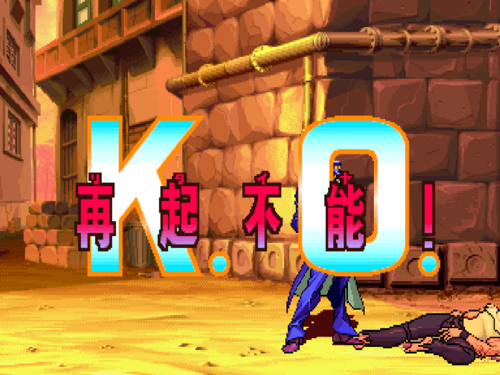
|
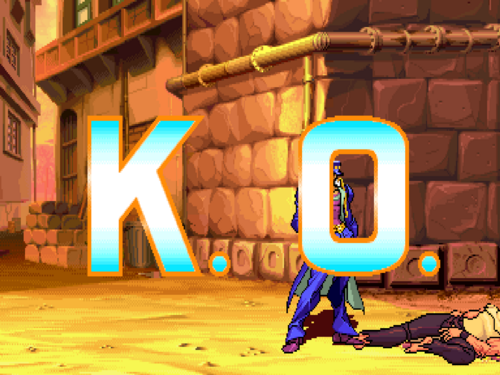
|
In the Japanese region setting, the character you play as determines the new challenger screen: the protagonists say "A new Stand user?!" (新手のスタンド使いか!), the villains (and JoJo) say "Who the hell are you?!" (何者だ!?), and the only female character, Midler, says "Who are you?" (何者!?). This did not carry over to other region settings, which instead use "Here comes a new challnger!!" (sic) for all characters.
| Hero New Challenger Text (Japanese) | Villain New Challenger Text (Japanese)
|
|---|---|
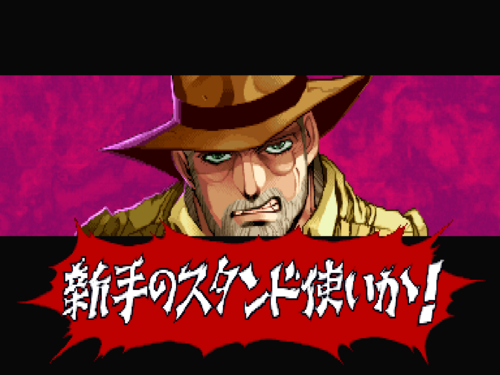
|
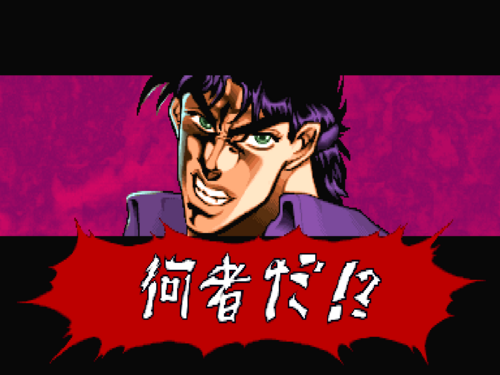
|
| Female New Challenger Text (Japanese) | English
|
|---|---|
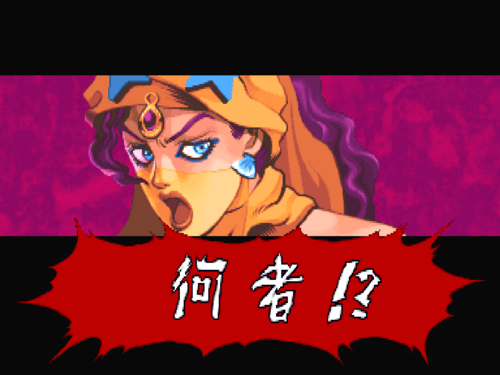
|
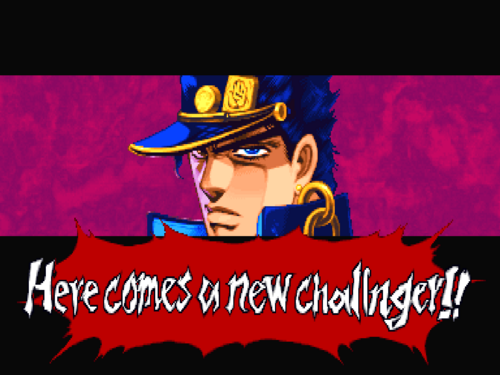
|
One of the strangest results of Western localization was the translation of Japanese into English, in which much of the original Japanese script is exaggerated or outright discarded for dramatic appeal. This is especially apparent in characters' victory quotes in Versus Mode, but can be seen in Story Mode as well.
| Japanese | English
|
|---|---|

|

|

|

|
Censorship
International releases went through censorship for some of the presentation and explicit content to accommodate younger, foreign audiences. While Western releases had fairly standard changes for the time, Asian releases were more severe due to Korean censorship of Japanese media. All Japanese text and dialogue was removed, replaced with English or grunting for the voice acting specifically.
All instances of blood in the game are recolored white (like sweat) barring some exceptions.
| Regulation Off | Regulation On
|
|---|---|
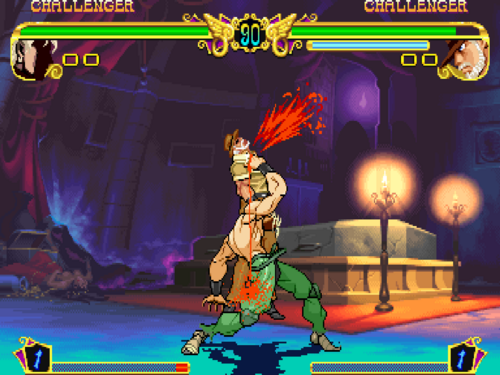
|
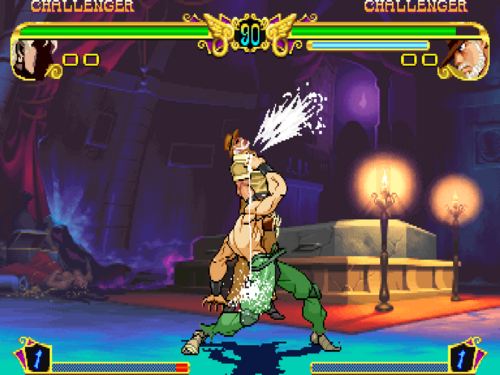
|
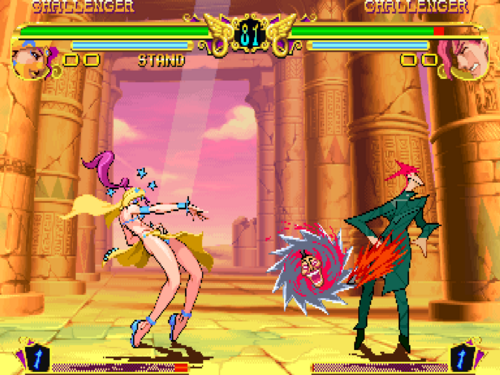
|
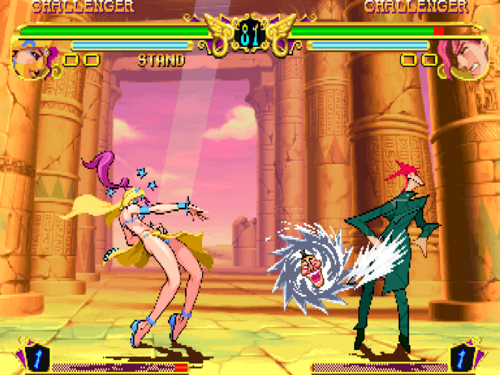
|
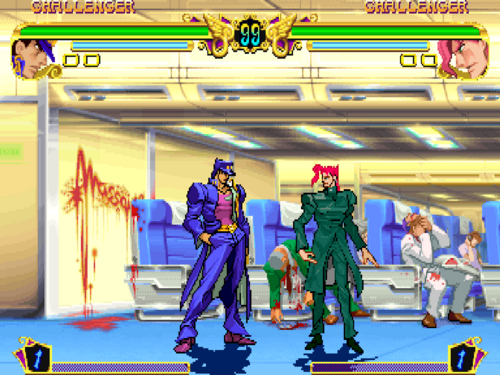
|
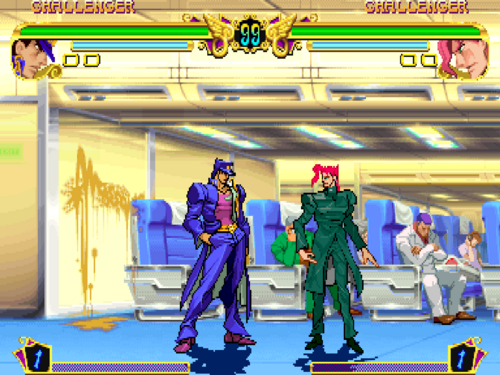
|
Instances of gore and cutscenes that were considered too intense were altered.
| Regulation Off | Regulation On
|
|---|---|
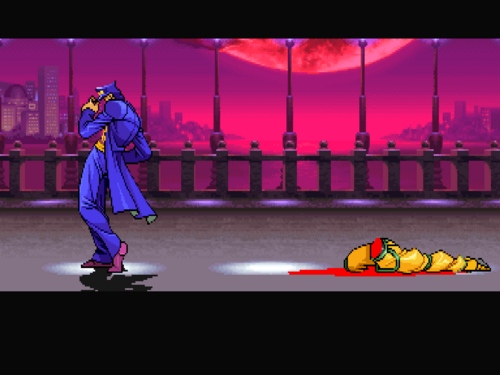
|
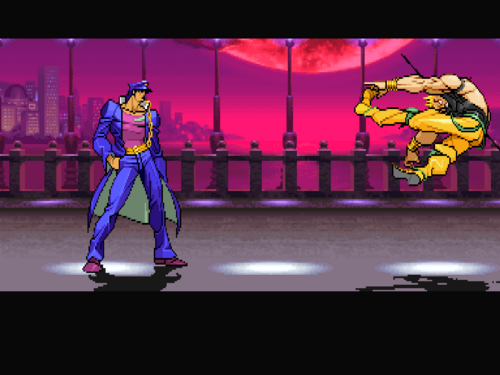
|
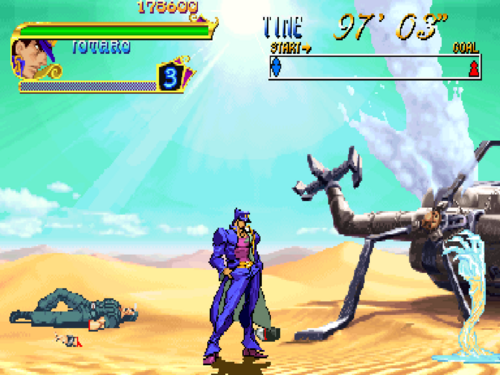
|
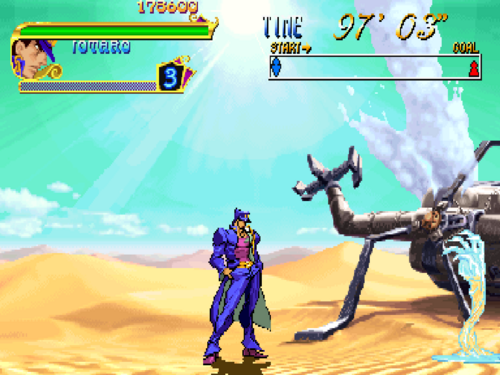
|
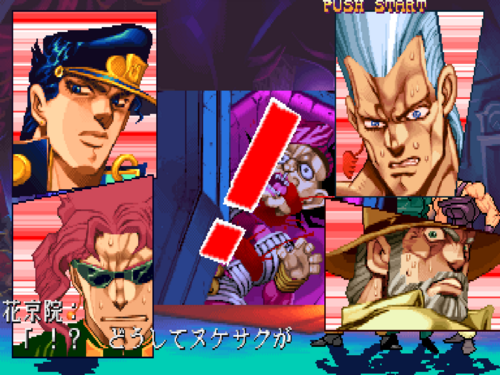
|
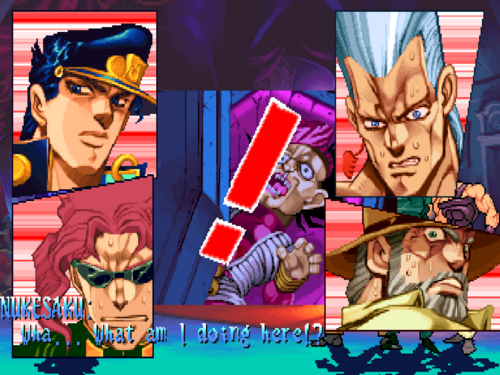
|
There are a small number of other mild changes, such as the Anubis sword being recolored to a wooden brown color or DIO's wine being recolored (though this could also be a simple palette oversight).
| Regulation Off | Regulation On
|
|---|---|
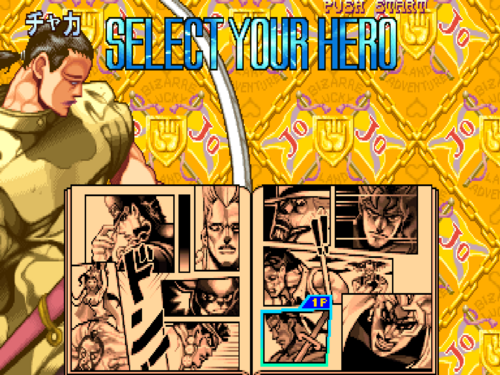
|
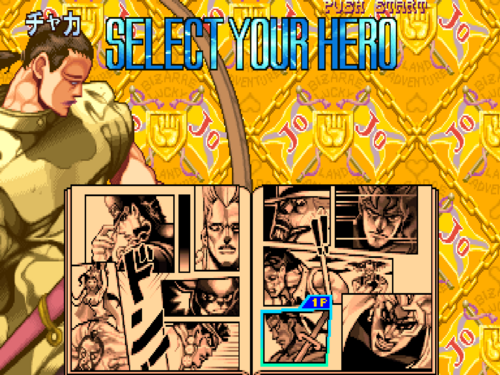
|
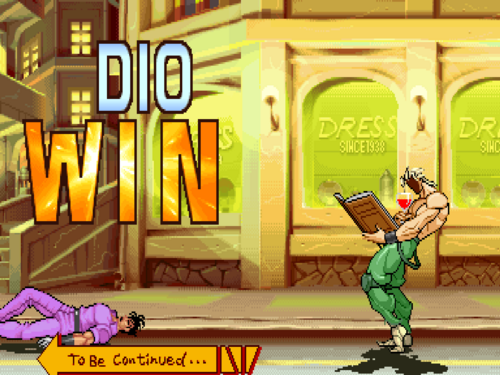
|
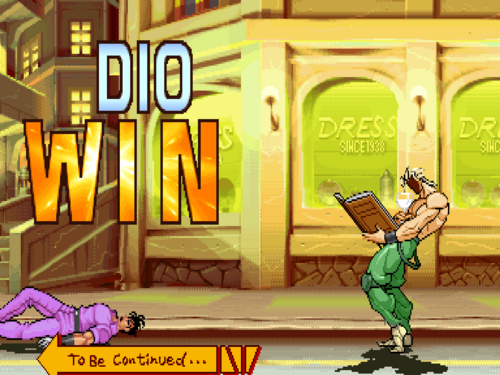
|
Gallery
Expand/Collapse All
Manuals
Trivia
- GioGio's Bizarre Adventure, another game developed by Capcom features an orchestral rendition of Polnareff's theme as the background music for Chapter 11-1. Some cutscenes also use the villain intro theme from this game's Story Mode.
- The underlying mechanics of All-Star Battle are based on the Capcom fighting games. In addition, All-Star Battle has two DLC costumes for Jotaro and Polnareff based on promotional material for this game.[5]
- The travel maps featured in Story Mode contain errors, mostly anachronistic oversights due to Stardust Crusaders being set in the 80s:
- The entirety of the Soviet Union is depicted as the Russian Federation (Russia Federation is also misspelled).
- The People's Republic of China's Yangzte River & Yellow River are strangely drawn onto the map (it's name is also missing the apostrophe).
- The Kashmir Conflict isn't portrayed.
- North Yemen & South Yemen weren't united into Yemen until 1990.
- The Ethiopian-Eritrean border is mistakenly drawn. Eritrea was still annexed by Ethiopia in the late 1980s.
- Somalia, Türkiye & the Nile River's names are misspelled.
- Iggy's Sand Storm super move is a reference to the Shun Goku Satsu move used by Akuma in the Street Fighter series. This is further evidenced in the game's debug mode, where an unused graphic shows the kanji for the word dog (犬) stylized in a similar manner to Akuma's kanji for heaven (天).
- In Capcom's "Super Elections" survey for their 40th anniversary, JoJo's Venture ranked 174th with 139 votes for the "Which of the following Capcom games do you like the best?" question.[6]
References
- ↑ [SEGA]家庭用ソフト:ソフトデータベース:ドリームキャスト:発売ソフト検索:ジョジョの奇妙な冒険 未来への遺産
- ↑ Capcom: Jojos Bizarre Adventure for Dreamcast
- ↑ "Official Dreamcast Magazine" May 2000, page 40
- ↑ ジョジョの奇妙な冒険 未来への遺産 for Matching Service | ドリームキャスト | 家庭用ゲーム | SEGA
- ↑ Classic JoJo’s Bizarre Adventure Arcade Artwork Inspires Free Downloadable Costumes for All-Star Battle | Shoryuken
- ↑ Capcom Super Elections Q1 Results


